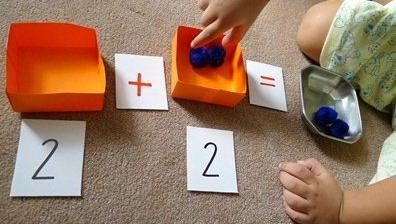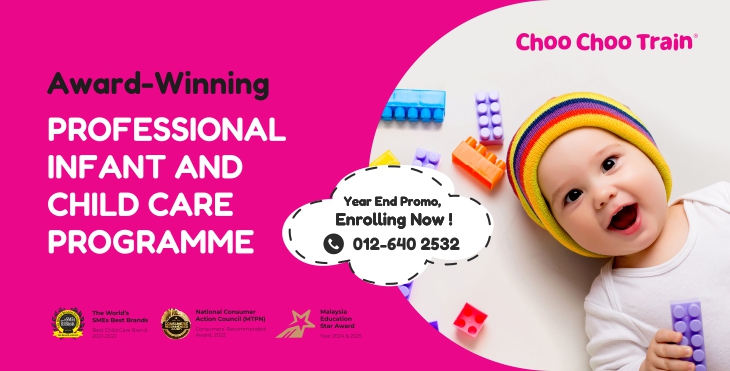How Soon Can Your Kids Learn Maths?
by on 02/08/2025 ...

As centuries come and go, few things remain the same for each upcoming generation. Having said that, one thing all parents can agree upon is the increasing importance of mastering the art of science and maths in order to compete in a world that is an integration of numbers, regular patterns and predictable cycles.
After all, the use of maths is still very much applicable in our everyday life, from programming to shopping, savings to investment. By having a strong understanding of maths, your children will not only qualify for the best jobs as adults, but will also be better equipped to help solve some of the world’s most pressing issues such as energy conservation and global warming. As such, most parents would want their children to be as competent in mathematics as they possibly can.
The Right Brain Method (Below 3 Years Old)
According to right-brain educators Glenn Doman and Makoto Shichida, young children have a unique method of perceiving quantity not by counting, but by using visualization and intuition. An in-depth research conducted by Doman found that a two and a half year old child can promptly “know” that there are 48 triangles in a page without actually having to count or guess the number. This ability to consistently answer correctly is scientifically referred to as “perceiving quantity” or “subitizing”.
To achieve this ability, both Doman and Shichida believe that children should be taught how to perceive quantity as early as possible, especially in the first year of their life. Their argument is that a baby’s phenomenal growth during their first year is a crucial learning time because the more you utilize your brain, the bigger it will grow. Subsequently, the reverse would then hold true, which is that infants who do not think much in the first 12 months of their lives have a tendency to lose brain cells and hence would not have as much brain power as they were originally born with.
Right brain supporters also believe that the younger the child is, the easier he or she is to teach as they view learning and discovering new things everyday as a form of playing. Doman argues that a child would actually prefer playing (or learning) over other basic human needs, such as eating. Glenn Doman also states that while any child below the age of five can absorb tremendous amount of information, teaching children who are less than two years old are the easiest and most effective of all.
The Later Years
What happens if your child is already over three years of age and has yet to learn about mathematics? Luckily, preschoolers are also taught basic mathematics in class as well, so most children would have little to no problem in adapting to primary school level mathematics by the time they are 7 years old.
However, recent studies by Professor Susan Levine from University of Chicago revealed that there are clear differences in children’s mathematical knowledge even at preschool levels, which suggests that your child may already be at a mathematical disadvantage even before qualifying for primary school classes.
The American study suggested that the amount of time parents spent talking to their children about numbers can greatly affect the child’s affinity with mathematics.
A separate study featured in the Journal of Developmental Psychology has also suggested that the level of mathematics knowledge one has will predict their future success as well, mostly because the ability to do well in mathematics is often associated with logical, analytical thinking. In short, it’s never too late to teach your child maths because sooner, is definitely better than later.
How to Talk Numbers at Home
To prove her theory, Professor Susan Levine meticulously recorded and analyzed parent-child interactions at home relative to the child’s ability and understanding of mathematics. Interesting enough, these parents do not force their children to practise mathematics on exercise books but instead, often use objects around the house to strike up a numerical-based subject. Levine argues that this is a much more effective method of teaching mathematics because while children are taught to memorize the words, “one, two, three” and so forth, they are much too young to understand that the words define a fixed size.
Besides pointing to random objects around the house for your children to identify (e.g. three blocks, two apples, five pens), parents could also try to frequently use number words into everyday conversations. While children may not understand the concept of a “hundred” versus a “billion” immediately, frequent usage of the terms correctly will help them to eventually understand and identify with the number. This will eventually allow them to have a clear advantage when it comes to understanding how these numerical words refer to any set size.
By the end of her study involving 44 families, Levine discovered that some families could manage to slot in as many as 1,799 number-related words in one week whereas others could only manage a mere 28 numbers of words. As predicted, families who talked more often about numbers had children who were more likely to respond correctly when tested.
How to Teach Math Formulas
Once your child has a steady understanding of the differences between four and five, a hundred and ten thousand, you can then move on to basic math calculations. The secret to not confusing your child is to have an order to the math you are about to teach. Most experts recommend that you first teach your child addition, followed by subtraction, negative numbers and then multiplication. Most kids should understand the idea of negative numbers as early as four years old, and they ought to have their multiplication tables memorized by age seven.
The Number Games
Professor Ming Ming Chiu from the University at Buffalo Graduate School of Education encourages all parents to make learning math a fun process at home in order to allow the children to feel comfortable with mathematical puzzles. Unlike the orthodox method of having your child sit by the study desk and memorize formula, Professor Ming supports teaching maths by the dinner table or by the living room sofa instead.
His popular Brain Game featured blueberries featured in three mathematical puzzles. In the first stage, blueberries are placed in two plates, from which the children must find out which plate contains the highest amount of blueberries. This game (known as “More? You Want More?”) introduces the concept of numbers to the children.
In the second stage, children learn the art of addition and subtraction as they try to evenly divide the number of blueberries onto two plates. In the second part of the game (known as “Be Fair and Share”), a third friend or plate is introduced to the game, following which the children must now learn how to use multiplication and division to evenly divide the blueberries onto three plates.
The best thing about these Brain Games is that it can be easily copied at home as well with any other props or items you can find at home. The only four simple rules for creating your very own Brain Game is to use things around the house that kids like (like candy, chocolate or popcorn), begin with an easy question, write down every step in the game and keep the atmosphere fun.
Pave the Way to Curiosity
One thing all intelligent people have in common is a burning desire to continuously discover more about the world surrounding them. While math may be the leverage needed to propel your child forward towards success, it is just as important that learning be a fun process to keep him or her passionate about constantly looking out for more information. Luckily, this good habit can be encouraged and emulated by a kid at any age.































